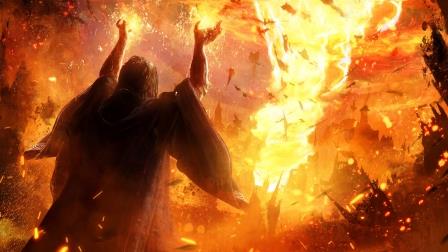
With a nod to Bonfire Night on the 5th of November, in this month’s edition of signs & symbols, we take a look at Fire Gods.
On Bonfire Night, standing around a fire is quite fun as we light sparklers, eat yummy food, keep warm, and wait for fireworks to light up the sky. However, in other circumstances, fire can be quite dangerous. Over the centuries, it has come to represent war, chaos, purification, and regeneration. It is also linked to the sun, the colour red, the hearth and home, and even divine love.
Fire Gods
Fire is, of course, an all-powerful element – beneficial but also violent. Fire gods are seen in many cultures across the globe. The Romans and Greeks had gods associated with the forge and the hearth.
We take a look at a few examples:
- Agni
In Sanskrit, the name of Agni, a Vedic deity, translates to ‘fire’. Depicted with one or two heads, symbolising his dual nature of destruction and compassion, he is revered as the vital energy within trees and plants.
- Chantico
Chentico, the Aztec goddess associated with volcanoes and the hearth, was believed to possess a tongue of fire. She held a special place as the protector of goldsmiths in Aztec mythology.
- Chu Jung
Chu Jung, the Chinese fire god, was known for enforcing the laws of heaven by punishing transgressors. He is commonly portrayed in armour and gained fame for battling his own son to prevent him from seizing the heavenly throne.
Here are three more Fire Gods
- Huehueteotl
Huehueteol, an Aztec deity associated with light and fire, is commonly portrayed as an elderly figure with a red or yellow complexion and a censer (incense burner) atop his head.
- Sekhmet
Frequently portrayed as a female figure with the head of a lioness and holding a cobra that breathes fire, this fierce Egyptian goddess of war annihilated her foes using fiery arrows, her radiant body resembling the midday sun.
- Vulcan
The Roman god Vulcan is associated with craftsmanship. He worked in his forge beneath Mount Etna, making weapons for gods and heroes. He is often depicted wielding an axe. Additionally, he was linked to volcanoes and fire, and he was celebrated during the Vulcanalia festival in the month of August.
Tweet